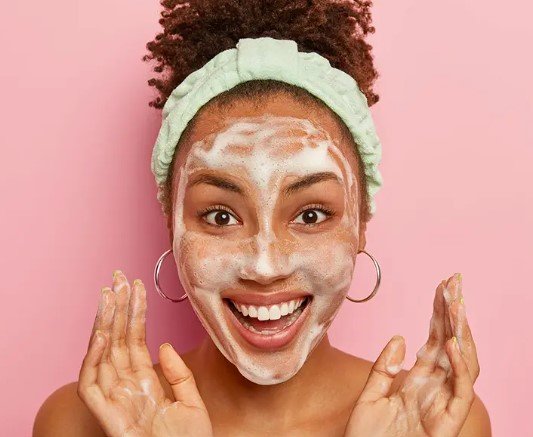Cheap AHA/BHA Exfoliants: Tips for Effective and Irritation-Free Skincare
Summary
- Cheap AHA/BHA exfoliants can be effective without causing irritation if used properly
- It is important to patch test the product before using it on your entire face
- Consistency is key when incorporating exfoliants into your skincare routine
- Exfoliation: AHAs and BHAs help to slough off dead skin cells, revealing smoother, brighter skin.
- Unclog pores: BHAs are particularly effective at penetrating the pores and removing impurities, making them ideal for acne-prone skin.
- Anti-aging: Regular exfoliation with AHAs can help to reduce the appearance of fine lines and wrinkles.
- Start slow: Begin by using the exfoliant once or twice a week to see how your skin reacts. Gradually increase the frequency as tolerated.
- Patch test: Before applying the exfoliant to your entire face, do a patch test on a small area of skin to check for any adverse reactions.
- Moisturize: Exfoliants can be drying to the skin, so be sure to follow up with a hydrating moisturizer to maintain skin barrier function.
- Sun protection: AHAs and BHAs can increase the skin's sensitivity to the sun, so it is essential to wear sunscreen daily to protect your skin from harmful UV rays.
Introduction
Exfoliation is a crucial step in any skincare routine as it helps to remove dead skin cells, unclog pores, and reveal smoother, brighter skin. Alpha hydroxy acids (AHAs) and beta hydroxy acids (BHAs) are popular exfoliating ingredients that can help to improve the overall texture and appearance of the skin. While there are many expensive exfoliants on the market, you may be wondering if you can achieve the same results with a cheap AHA/BHA exfoliant without experiencing any irritation. In this blog post, we will explore the effectiveness of affordable exfoliants and provide tips on how to use them safely.
Understanding AHA and BHA
AHAs are water-soluble exfoliants that work on the surface of the skin to loosen dead skin cells and promote cell turnover. Common AHAs include glycolic acid and lactic acid. BHAs, on the other hand, are oil-soluble exfoliants that can penetrate deep into the pores to unclog them and reduce acne-causing bacteria. Salicylic acid is a popular BHA that is often recommended for oily and acne-prone skin.
Benefits of AHA/BHA exfoliants
Can you use a cheap AHA/BHA exfoliant without irritation?
While more expensive exfoliants may contain additional soothing ingredients to reduce the risk of irritation, that doesn't mean that affordable options are ineffective. Many budget-friendly exfoliants contain the same active ingredients as their pricier counterparts, but may have a simpler formulation. When using a cheap AHA/BHA exfoliant, it is essential to pay attention to the concentration of the active ingredient and how your skin reacts to it.
Tips for using a cheap AHA/BHA exfoliant
Consistency is key
Regardless of the price point of your exfoliant, consistency is key when it comes to seeing results. Incorporating AHAs and BHAs into your skincare routine on a regular basis can help to improve the overall texture and appearance of your skin. Remember that skincare is a marathon, not a sprint, so be patient and give your skin time to adjust to the exfoliant.
Conclusion
Using a cheap AHA/BHA exfoliant can be an effective way to improve the texture and appearance of your skin without breaking the bank. By following the tips outlined in this blog post and listening to your skin's needs, you can incorporate exfoliants into your skincare routine safely and effectively. Remember that everyone's skin is different, so what works for one person may not work for another. If you experience persistent irritation or redness, it is best to consult a dermatologist for personalized skincare advice.

Disclaimer: The content provided on this blog is for informational purposes only, reflecting the personal opinions and insights of the author(s) on the topics. The information provided should not be used for diagnosing or treating a health problem or disease, and those seeking personal medical advice should consult with a licensed physician. Always seek the advice of your doctor or other qualified health provider regarding a medical condition. Never disregard professional medical advice or delay in seeking it because of something you have read on this website. If you think you may have a medical emergency, call 911 or go to the nearest emergency room immediately. No physician-patient relationship is created by this web site or its use. No contributors to this web site make any representations, express or implied, with respect to the information provided herein or to its use. While we strive to share accurate and up-to-date information, we cannot guarantee the completeness, reliability, or accuracy of the content. The blog may also include links to external websites and resources for the convenience of our readers. Please note that linking to other sites does not imply endorsement of their content, practices, or services by us. Readers should use their discretion and judgment while exploring any external links and resources mentioned on this blog. Content in this blog is copyright protected, please do not repost or embed content without prior written permission.